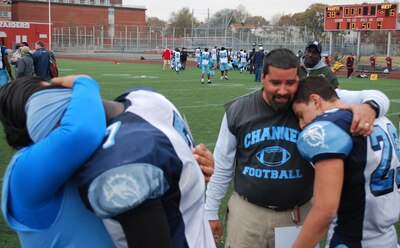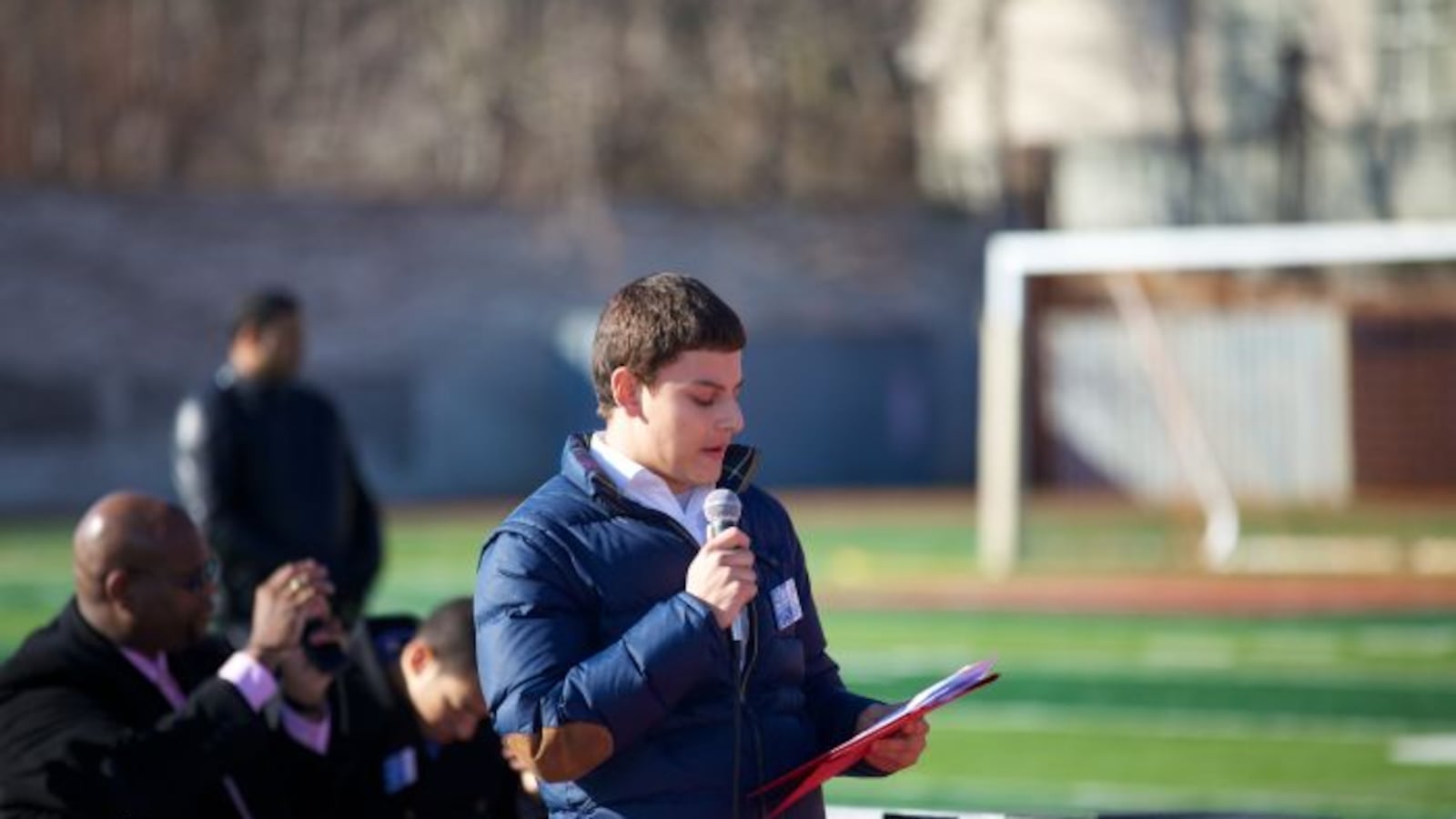For the two years after his graduation, teachers, counselors, and teammates were still talking about the kid they called “Z.”
Justin Zemser was the valedictorian of Channel View High School for Research’s class of 2013, a student who had become renowned for helping his neighborhood in the Rockaways recover from Superstorm Sandy. After finishing his sophomore year at the Naval Academy in Annapolis, he was scheduled to return to Channel View to speak at a mentorship retreat for students this week.
He died Tuesday night aboard the Amtrak train that derailed on its way to New York from Washington, D.C., an event that has had an outsize impact on the city’s education world, having also taken the life of former CUNY Prep principal Derrick Griffith. News of Zemser’s death shook the Rockaway community where he grew up, where those who knew him say he seemed destined to do great things.
“Z was more than a friend,” said Breland Archbold, who knew Zemser since they were first-grade classmates. “He was like a brother.”
Zemser was Channel View’s valedictorian, captain of its football team, and its student body president. But Jennifer Walter, Zemser’s guidance counselor, said it wasn’t until she began helping Zemser put together his college applications that she realized the extent of his work in the community, which included stints with the Special Olympics and in the office of his city councilman, Eric Ulrich.
“He displayed honor, discipline, dedication,” said Victor Nazario, Zemser’s former coach. “The list goes on and on. I could talk forever about all the positive qualities that that young man possessed.”

White and Jewish, Zemser fit in seamlessly at a school where more than 80 percent of students were black and Latino, friends said. Channel View opened in 2004, one of the first small high schools opened to replace larger underperforming high schools under former Mayor Michael Bloomberg. A non-selective school that draws primarily from the surrounding Rockaway neighborhoods and several low-income housing developments, Channel View last year had a 97 percent four-year graduation rate, and its graduates are better prepared for college than the average city student, according to the school-review website Insideschools.
But Channel View has its share of challenges. It shares the Beach Channel Campus with three other schools, and students walk through metal detectors to enter. Parts of the isolated Rockaway community struggle with poverty, and residents and elected officials have long complained that the community’s issues get too little attention from those in City Hall, more than an hour away by train.
Growing up in Rockaway, Archbold said, “The biggest thing is who you hang out with, and how your goals and views get shaped by that.” Zemser, he said, “was always the driving force, the motivator of the group always bringing out the best in me.”
Rockaway faced even bigger challenges in the aftermath of Superstorm Sandy, which devastated the Rockaway Peninsula. Students from Channel View were shipped miles away to a new school, electricity was down for weeks, and roads were strewn with abandoned cars that had been carried by the ocean’s massive swells.
Walter, Zemser’s guidance counselor whose home was severely flooded from the storm, recalled receiving regular check-in texts from the senior asking how her family was doing and if he could do anything. Through texts and Facebook messages, Zemser also managed to rally his teammates to reunite for an emotional playoff football game, the last of his high school career.
The players were exhausted from two weeks of staving off the cold at night and shuttling up and down stairways in powerless housing projects and shoveling out their and others’ flooded homes. The Beach Channel Dolphins never really stood a chance. But the players seemed happy just to be thinking about something else for a few hours.
“He was a big part of the reason we were even able to play the game,” Nazario said. (Zemser later joined me to talk about the game and his experience on CUNY’s Brian Lehrer news program.)
Zemser’s parents requested privacy in a statement on a Facebook page set up to remember their son, who they described as “community-minded.”
Zemser’s transition to college was unsurprisingly seamless, his friends and teacher said. He was an honors student and vice president of the Jewish Midshipmen’s Club. He hosted 60 Special Olympics athletes for a tour of the campus and football game. And Archbold said he was already fixating on his next great challenge: becoming a Navy SEAL.
Speaking after the football game more than two years ago, Zemser reflected on why he went through so much effort to field a team despite the long odds.
“I wouldn’t have been able to live with that feeling of ‘what if?’” he said. “At least now I know we had a shot at it.”


